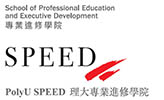雙語社評齊齊聽
[英語 (足本收聽)] Presented by Mr KWOK, Tony Chun-tung, Lecturer of Hong Kong Community College, The Hong Kong Polytechnic University
[普通話 (足本收聽)] Presented by Dr QIU, Tina Wei,Lecturer of Hong Kong Community College, The Hong Kong Polytechnic University
The crisis of class reductions and school closures has reappeared. The government believes that the continued decline in the school-age population is structural, which necessitates a corresponding adjustment to the numbers of classes in secondary and primary schools. The scale on which this will be conducted has aroused concern.
A few days ago, the Education Bureau submitted a document to the Legislative Council, issuing an advance warning that it will reduce classes and close down schools. According to the Education Bureau, the number of babies born in Hong Kong has continued to decline in recent years. The number went from more than 60,000 in 2016 to less than 53,000 in 2019. By 2020, the number had dropped to a 20-year low of only 43,000. It is hard to tell whether the birth rate will rebound after the pandemic. The authorities believe that the change in the school-age population will be completely different from the situation over the past 10 years, as the continued decline will be structural rather than temporary. This means that transitional relief measures may not be suitable, and it will be necessary to formulate long-term measures as soon as possible to deal with a glut of school places. In view of the long-standing large number of excess school places in specific regions, the Education Bureau has begun to discuss the matter with school sponsoring bodies to gradually close down or relocate schools. As the sponsoring body of government schools, the government will lead by example by closing down or relocating government schools that have been unable to enrol enough students for years.
In the past two years, Hong Kong has been hit by unprecedented political changes and the pandemic. Some people have chosen to move abroad with their entire families. Many cross-border students have been unable to travel to Hong Kong for school due to the pandemic, so they have simply transferred to schools in Shenzhen. Many mainland parents originally intending to arrange for their children to begin primary one in Hong Kong have ultimately given up the idea. When classes resumed in the new school year, the numbers of students in many primary and secondary schools decreased. The situation has been the most serious in North District, where there were a relatively large number of cross-border students in the past. According to the Education Bureau, the number of primary one classes in public primary schools in Hong Kong in the new school year has reduced drastically by at least 55 from the previous school year. As time passes, the shortfall in the student intake will spread to secondary schools in six years. In addition, Hong Kong's fertility rate dropped sharply last year. It can be extrapolated that the number of children beginning primary one in 2026 will very likely decline, thus forming another shortfall. The authorities need to plan early to help school sponsoring bodies, secondary schools and primary schools cope with such difficult times. As for whether to reduce classes and close down schools on a large scale, careful consideration will be necessary. One must not act rashly.
In terms of the supply of secondary and primary students, the impact of the mass exodus from Hong Kong will mainly be short-term. Similarly, the impact of the pandemic will come to an end one day. After the border is reopened between Hong Kong and the mainland, the number of cross-border students will ultimately see a gradual recovery. However, it will be another matter whether the numbers can return to previous levels.
Now the pressure of class reductions and school closures is reappearing in primary and secondary schools. If there is indeed a problem with how specific schools are being run, which leads to seriously insufficient numbers of students, it will of course be necessary to readjust educational resource investment appropriately and consider relocating some schools to new development areas. However, the authorities must consider the issue in a comprehensive manner. Schools cannot be closed down rashly. There will be many uncertainties in the development of Hong Kong in the next 10 years. Some room for manoeuvre should be preserved in the allocation of educational resources so that these resources can be adjusted according to new demand and new changes.
教育資源預留彈性 殺校勿變亂劈亂砍
縮班殺校危機再現,政府認為學齡人口持續下跌屬結構性,中小學班級數目將要相應調整,具體規模惹人關注。
日前教育局向立法會提交文件,「預告」要縮班殺校。教育局表示,近年本港出生嬰兒數字持續下跌,由2016年逾6萬,降至2019年不足5.3萬,及至2020年,有關數字更跌至20年新低,僅得4.3萬,疫後出生率難料會否回升。當局認為學齡人口變化,與過往10多年情况截然不同,持續下跌屬結構性而非過渡性,採用紓緩過渡措施未必適用,必須及早訂定長遠措施,應對學位過剩。針對個別地區長期有大量剩餘學位,局方已開始與辦學團體商討,逐步停辦或重置學校事宜,政府作為官校的辦學團體,將以身作則,停辦或跨區重置長期收生不足的官校,樹立榜樣。
過去兩年,香港經歷了前所未有的政治變化和疫情衝擊,有人選擇舉家移民,很多跨境學童則因為疫下未能如常通關回校上課,索性轉校留在深圳讀書,不少內地家長原本有意讓年幼子女來港入讀小一,最終亦打消念頭。新學年復課,不少中小學的學生人數均見減少,過往有較多跨境學童的北區,「災情」最嚴重。根據教育局資料,新學年全港公營小學小一班數,比上學年大幅減少起碼55班,收生斷層問題將隨着歲月流逝,6年後傳導至中學。另外,去年本港生育率大跌,按此推算,2026年適齡入讀小一人口,亦很可能大幅下跌,造成另一個斷層,當局需要及早籌謀,協助辦學團體和中小學應付困難時期,至於是否大舉縮班殺校,必須深思熟慮,避免輕率行事。
移民潮對中小學生源的影響,主要是短期;同樣,疫情影響亦必有盡時,香港與內地恢復正常通關後,跨境學童總會逐步回升,能否恢復舊觀是另一回事。
現在中小學再現縮班殺校壓力,如有個別學校運作確實出了問題,收生嚴重不足,重新調節教育資源投入,適度整合,當然值得考慮,重置部分學校到新發展區,也是一個方法,然而當局必須通盤考慮問題,殺校不能變成亂劈亂砍。香港未來10多年發展變數甚多,教育資源配置應預留空間彈性,能夠及時因應新需求新變化而調節。
明報社評2021.10.15






